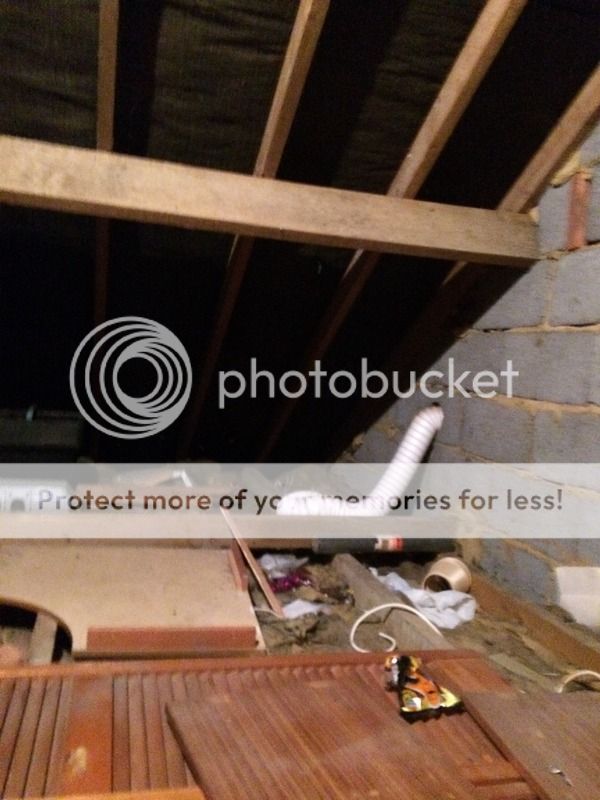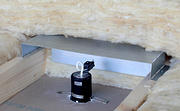Hi all,
I'm in the process of having my bathroom redone, and one of the things I want to do is replace the fan in the droplight/fan combo with a more powerful mixed flow fan mounted in the loft, keeping the actual light unit (just put the new fan downstream in the loft).
The current fan is next to useless, it just makes noise and has no real suction. The way it was set up is that the ducting runs into the loft and then outside, but the exhaust is about 30cm above the loft floor, along which the ducting runs.
I had read that some mixed flow fans will gather condensation inside if there is too steep of an angle to the exhaust opening. In that situation, how does one mount the fan?
Here is a pic (we had just moved in, there was some rubbish in the loft from the previous owner), the white duct comes from the shower cubicle and then is connected to the outside wall.
Any info would be appreciated - thanks!


I'm in the process of having my bathroom redone, and one of the things I want to do is replace the fan in the droplight/fan combo with a more powerful mixed flow fan mounted in the loft, keeping the actual light unit (just put the new fan downstream in the loft).
The current fan is next to useless, it just makes noise and has no real suction. The way it was set up is that the ducting runs into the loft and then outside, but the exhaust is about 30cm above the loft floor, along which the ducting runs.
I had read that some mixed flow fans will gather condensation inside if there is too steep of an angle to the exhaust opening. In that situation, how does one mount the fan?
Here is a pic (we had just moved in, there was some rubbish in the loft from the previous owner), the white duct comes from the shower cubicle and then is connected to the outside wall.
Any info would be appreciated - thanks!







